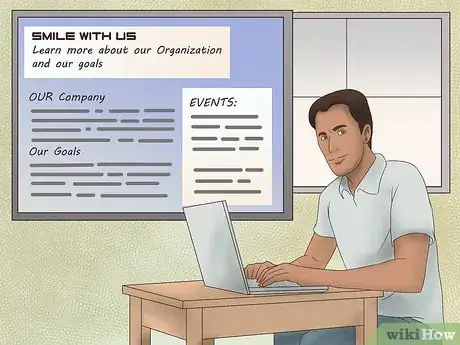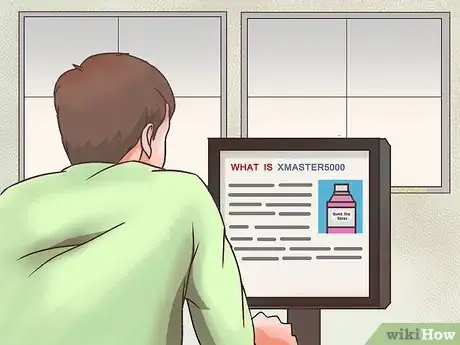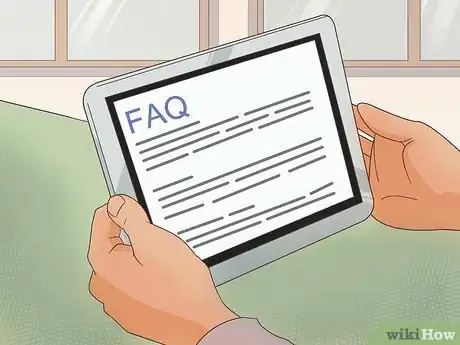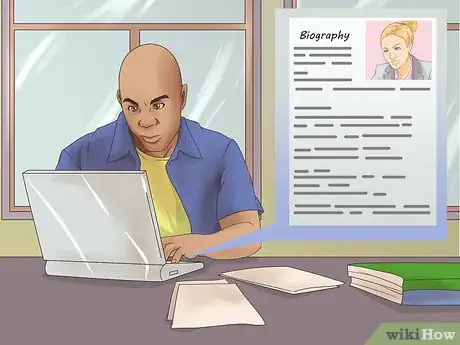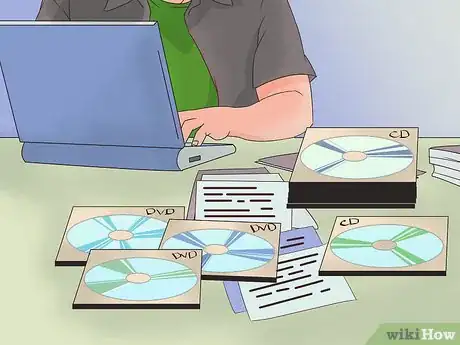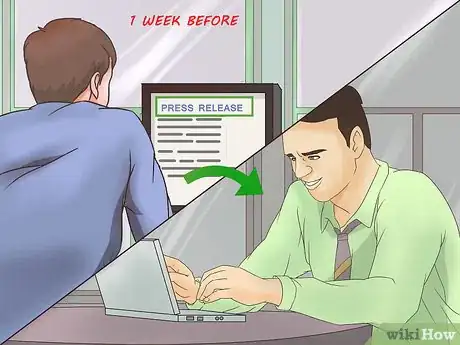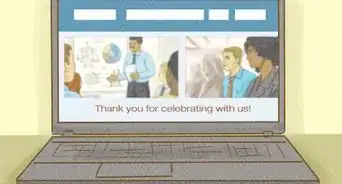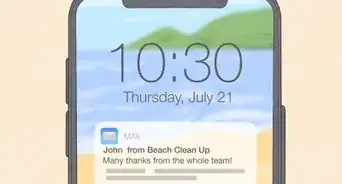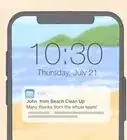This article was co-authored by wikiHow Staff. Our trained team of editors and researchers validate articles for accuracy and comprehensiveness. wikiHow's Content Management Team carefully monitors the work from our editorial staff to ensure that each article is backed by trusted research and meets our high quality standards.
This article has been viewed 24,938 times.
Learn more...
A press kit, or PR kit, is simply a packet of information furnished to members of the media by an organization that wants press coverage. Not only are they meant to inform the media about your organization, they are also designed to entice members of the media to want to learn more about what you have to offer. In the not so distant past, a press kit was a physical package of materials sent directly to a news organization or reporter. Unless an organization is gearing up for a specific event, these days the “press kit” is typically just a section of a website that says “press.” While creating press kits for events requires some tailoring to the specific event, the basics of the press kit are the same.
Steps
Press Kit Design
-
1Introduce your organization. The first section of your press kit should be designed to give a journalist a good working knowledge of your organization all by itself. Think of the introductory section as the Cliff's Notes version of the rest of your press kit. It should contain:[1]
- An explanation of what your organization does, why your organization does what it does, and who it does it for.
- Very basic facts about the history of your organization, including the date of its founding and its growth over time.
- Important statistics illustrating the story of your organization. If the press kit was for a company, this might include growth numbers, if the press kit was for a band, the statistics might be YouTube views, downloads, or number of states (or countries) toured.
- A table of contents for the rest of the press kit.
- A press contact person and their contact information.
-
2Tell them about your product or service. In some way, shape, or form, any organization creating a press kit is going to be offering a product or service. Since the product or the service is what generates income, you need to highlight its good points and minimize the bad. If you're offering a new product, then explain why it is significant. For example, the Exmaster 5000--the culmination of years of research and development--is going to revolutionize the industry. A complete departure from the norm, the Exmaster 5000 can do..." [2]
- Regardless of whether you're touting an old product or rolling out a new one, this section calls for pictures, video, and audio to showcase your offering.
- Although bands, theatrical companies, and nonprofits might not think of themselves as offering a product or service, their creative output or their mission constitutes their product.
Advertisement -
3Include links to press releases and past press coverage. Since your press kit is designed to get media coverage on your own terms, you should include examples of the type of media coverage you're aiming for.[3]
- This is a standard component of a press kit, and reporters know it's suggestive of the type of coverage you're looking for. Let the rest of your press kit serve to demonstrate why the reporter should agree.
- If your press kit is entirely digital, a good way to showcase previous media coverage is to quote the lede on your page and link to a PDF of the entire article. If your press kit is physical, edit judiciously. Fifty pages of old articles and press releases is overkill.
-
4Write an FAQ. In general, a section answering frequently asked questions (FAQ) serves to keep you from having to waste time answering the same questions again and again. But in the context of a press kit, the FAQ should suggest the types of questions you want the reporters to ask.[4]
- For instance, if your organization sold a product that had an array of uses, but for whatever reason was buttonholed into a very niche corner of the market, you might pose a question like: “Is that all this widget can do?” and answer it with some suggestions on how to get the most out of your product.
-
5Write short biographies of important staff members. When it comes down to it, all stories are “human interest” stories. It is people who buy and use products and people who need services. There is always a way to find a personal angle in a story, even one about a product launch. When you write a little bit about your staff, you make it easier on the reporters to find out what that personal angle is.[5]
- When you're writing the biographies, cover more than the standard information about where so-and-so went to school and how many degrees they have. Instead, emphasize a unique aspect of the subject's history, like their reason for joining the venture in the first place. A lot of people have degrees, but very few have exactly the same passions and motivations.
- For example, you might say that "Our CEO, Bob Smith, didn't start out thinking he was going to be the CEO of an industry leader like Widgetech. He started out as a man with a vision--to make a widget like no other."
Branding and Customization
-
1Include appropriate testimonials. It's common practice to include testimonials from customers in press kits. Since a press kit in this day and age usually means a section of a website, the testimonials are typically general, representing many types of customers. Though it makes sense in that context, if you're putting together a press kit for a specific event, you'll be better served by using testimonials from people who are similar to those at the event.[6]
- If you're putting together a press kit for an architect's conference, include testimonials from architects. For example, "Widgetech's widgets have completely changed the way I draw up plans for houses. I'm ten times as productive as I was before Widgetech rolled out the original widget. Now they're at it again, making my success possible. I wouldn't be where I am today without Widgetech."
-
2Create multimedia specific to the event. It's becoming more and more common for press kits to include DVDs, CDs, slideshows and (of course) photographs. Adding these components works. Members of the media are far more likely to read press kits containing audio and video elements. Customizing your multimedia for the event you're boosting maximizes the effectiveness of the strategy.[7]
- Think of your press kit as a long letter to reporters explaining why and how you and your product should be covered. A non-customized press kit is like a form letter. Just as you probably attach little importance to form letters, reporters will attach less importance to a press kit that isn't tailored to your event.
- So if the new drafting software your firm developed is going to revolutionize the profession of architecture, the video you include in your press kit should talk about that specifically.
- Remember to include files of your logo (use a flash drive for a physical packet) with your press kit.
-
3Send out press releases. About a week before your event, send a press release to the publications you expect to cover your event (or hope will cover it). That way, you can avoid getting lost in the crowd of competing press releases on the first day of the event and you give enough lead time to benefit from the pre-event publicity.
- Conventional wisdom states that you should avoid sending out your press release on Mondays, Fridays, and weekends. The plurality of press releases are sent on Monday or Friday morning, so sending yours on a Thursday afternoon will make it stand out.[8]
- Don't try and compete with a big news story. An impending hurricane will always be a bigger story than your product launch.
-
4Compile your physical press kits. Before the event, compile your physical press kits. Since your press kit is available on your website, the physical packet is a little redundant. But most people prefer reading paper to screens, and you want to make it as easy as possible on the people covering your event.
- You don't need to send your packet to a graphic designer, but you should do your best to make your press kit look stylish and notable. It might be competing for attention with several others, and you should use any advantage you can get.
References
- ↑ https://www.entrepreneur.com/article/57260
- ↑ https://www.thebalance.com/how-to-create-impactful-press-kits-39191
- ↑ https://zapier.com/blog/best-press-kit/
- ↑ https://www.entrepreneur.com/article/57260
- ↑ https://www.thebalance.com/how-to-create-impactful-press-kits-39191
- ↑ https://zapier.com/blog/best-press-kit/
- ↑ https://www.thebalance.com/how-to-create-impactful-press-kits-39191
- ↑ https://prinyourpajamas.com/5-tips-for-a-killer-press-release/
